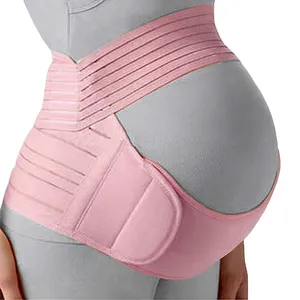
Maternity Belly Belt After Pregnancy Using Belt 3 In 1 Maternity Belt Pregnancy Support Waist Belly Corset Prenatal

Wholesale Made In China Shoulder Auto Simple 2 Point Seat Belt Protector For Pregnant Women
















Navigating the road during pregnancy brings a unique set of challenges, particularly when it comes to safety. A pregnant seat belt is designed to adapt to the needs of expectant mothers, ensuring that both the mother and unborn child are protected while traveling in a vehicle. This introduction to pregnancy seat belts will delve into their importance, types, and considerations for use.
The design of a pregnancy safety belt is specialized to accommodate a growing belly, aiming to provide comfort without compromising on safety. Unlike standard seat belts, these devices ensure that the belt sits in a position that is both secure and non-restrictive for the pregnant belly. Seat belt during pregnancy is not just a matter of comfort but a critical adaptation to traditional safety measures.
There are various types of pregnancy seat belts, each catering to different stages of pregnancy and vehicle types. For instance, a pregnancy seat belt adjuster can reposition the seat belt to fit more comfortably, while a pregnancy car seat belt is specifically designed for use in cars. These belts come in forms such as the pregnancy seat belt hook, which anchors the belt below the belly, and the pregnancy seat belt adapter, which adjusts the lap and shoulder belt for optimal positioning.
Materials used in pregnancy seat belts prioritize durability and flexibility. The belts often feature breathable fabrics that reduce sweating and discomfort. Additionally, the adjusters and hooks are typically made from sturdy materials that can withstand the force of a car impact, ensuring that the belt stays in place without exerting undue pressure on the pregnant belly.
The primary advantage of a pregnancy seat belt is the increased safety it provides. By correctly positioning the seat belt away from the neck and belly, it reduces the risk of injury in the event of an accident. Moreover, the use of a pregnancy car seat belt adjuster can alleviate discomfort commonly experienced with standard seat belts, making driving or riding in a car more comfortable for pregnant women.
When selecting a pregnancy seat belt, it is important to consider the specific needs of the user. Factors such as the stage of pregnancy, the type of vehicle, and personal comfort preferences should guide the choice. It is also advisable to look for products that are easy to install and adjust, as well as those that have been acknowledged by safety organizations, such as the nhtsa approved pregnancy seat belt.
In conclusion, the use of a pregnancy seat belt is an essential aspect of prenatal care for women who travel by car. By understanding the different types, features, and advantages, expectant mothers can make informed decisions to ensure their safety and that of their unborn child on the road.